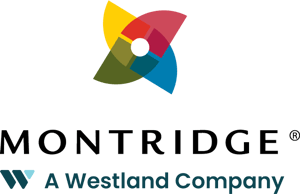You have a benefits plan in place to keep your employees healthy and provide financial security for them when the unexpected occurs. But do you know that benefits fraud might be costing you higher insurance premiums? Your business may also incur a high cost in order to deal with benefits fraud.
What can you do to reduce the chances of fraud happening at your organization? The first step is understanding what constitutes benefits fraud and recognizing the signs that it is happening in your company. It occurs any time an employee submits false or misleading information about health or dental treatments received by themselves or their dependents. Here is a breakdown of the three main categories of benefits fraud.

Understanding the 3 Types of Benefits Fraud
1. Benefits Abuse
Often occurring at the end of the plan year, benefits abuse happens when an employee puts in a claim for treatments or items that are covered under their plan that were not medically necessary. For instance, employees may try to make full use of their annual massage therapy allowance despite not requiring treatment for an injury or underlying condition.
However, benefits abuse is not limited to employees. Unethical practitioners may overtreat your employees and recommend unnecessary procedures to bill your business’ plan to its limit. Being aware of benefits abuse can prevent your business from racking up unnecessary costs.
2. Entitlement and Justification
This type of fraud occurs in many different forms. It involves things like claiming a treatment was performed for a child because the parent has reached their plan maximum for the year. Or claiming designer sunglasses as prescription lenses.
Again, sometimes this type of fraud is initiated by the employee and sometimes it is initiated by the practitioner. The practitioner may offer to change the name on the receipt or issue a prescription receipt for a pair of sunglasses. An employee may be convinced that there is nothing wrong.
Employees often justify benefits fraud with excuses like, “I pay for it, I should be able to use it any way that I want” or “It’s not really a crime, the insurance companies or my employer can afford it.” 75% of Canadians believe the only punishment for benefits fraud is repayment. They do not understand that it is a criminal activity.
3. Large Scale Fraud
Benefits fraud is not just your employees fudging receipts. It involves unscrupulous clinics billing the maximum for each type of paramedical (massage, chiro, physio, etc.) coverage available under your plan even though treatment may be provided by only one type of practitioner.
It can involve stolen or falsified prescriptions. This may include one employee at your place of business recruiting other employees to file claims under the plan using fake prescriptions and then splitting the proceeds. It can also involve clinic staff filing multiple false claims along with legitimate ones to try to hide the crime.
It involves criminal organizations. It is becoming a highly sophisticated crime involving the usage of false clinics in empty office buildings, fake associations full of fake practitioners with fake diplomas from fake schools, and non-existent companies.
The scope and scale of fraud is outlined in part one of a video round table hosted by HR Reporter and Sun Life.
Consequences of Benefits Fraud

There are a variety of reasons you should try to tackle the issue of benefits fraud within your organization. Beyond being criminal activity, there are ramifications for employees, group plan members and your organization depending upon the nature and severity of the crime.
For Plan Members or Employees, committing benefits fraud can result in:
- Reimbursement of funds
- Job loss
- Having a criminal file
- Getting fined
- Imprisonment
- Tainted reputation
Canadian insurers are actively working towards preventing benefits fraud. However, as one member of Sun Life’s investigative team described the process, “Today, [benefits fraud is] not like finding a needle in a haystack; it’s like trying to find a needle in a stack of similar-looking needles,” says Gary Askin, assistant vice-president, fraud and risk management at Sun Life.
Next Steps
Most Canadians underestimate the consequences of health and dental benefits fraud. Education is the key to helping your employees to understand the nature and consequences of benefits fraud. It is estimated that hundreds of millions of healthcare dollars are lost to fraud. This means higher costs for everyone, including your organization.
Mitigate fraud in your organization by helping employees understand their plan and how to manage their plan. Make sure they verify that the claims that they are making are correct. It is also a best practice to have them acknowledge that they understand benefits fraud is a crime and the related consequences. Make sure you update your codes of conduct and employee contracts to include the ramifications of benefits fraud.
In addition to these tips, Sun Life has put together a comprehensive guide regarding benefits fraud including a series of actions you can take to reduce abuse and fraud within your organization.
Finally, the Canadian Life and Health Insurance Association (CLHIA) has a section on their website to allow for anonymous reporting of benefits fraud to all insurers or a specific carrier.

Get Ready For An Effective Benefits Renewal
Benefits renewal time is a great opportunity to revise your current plan. Here’s what you need to know before you renew.
Download





